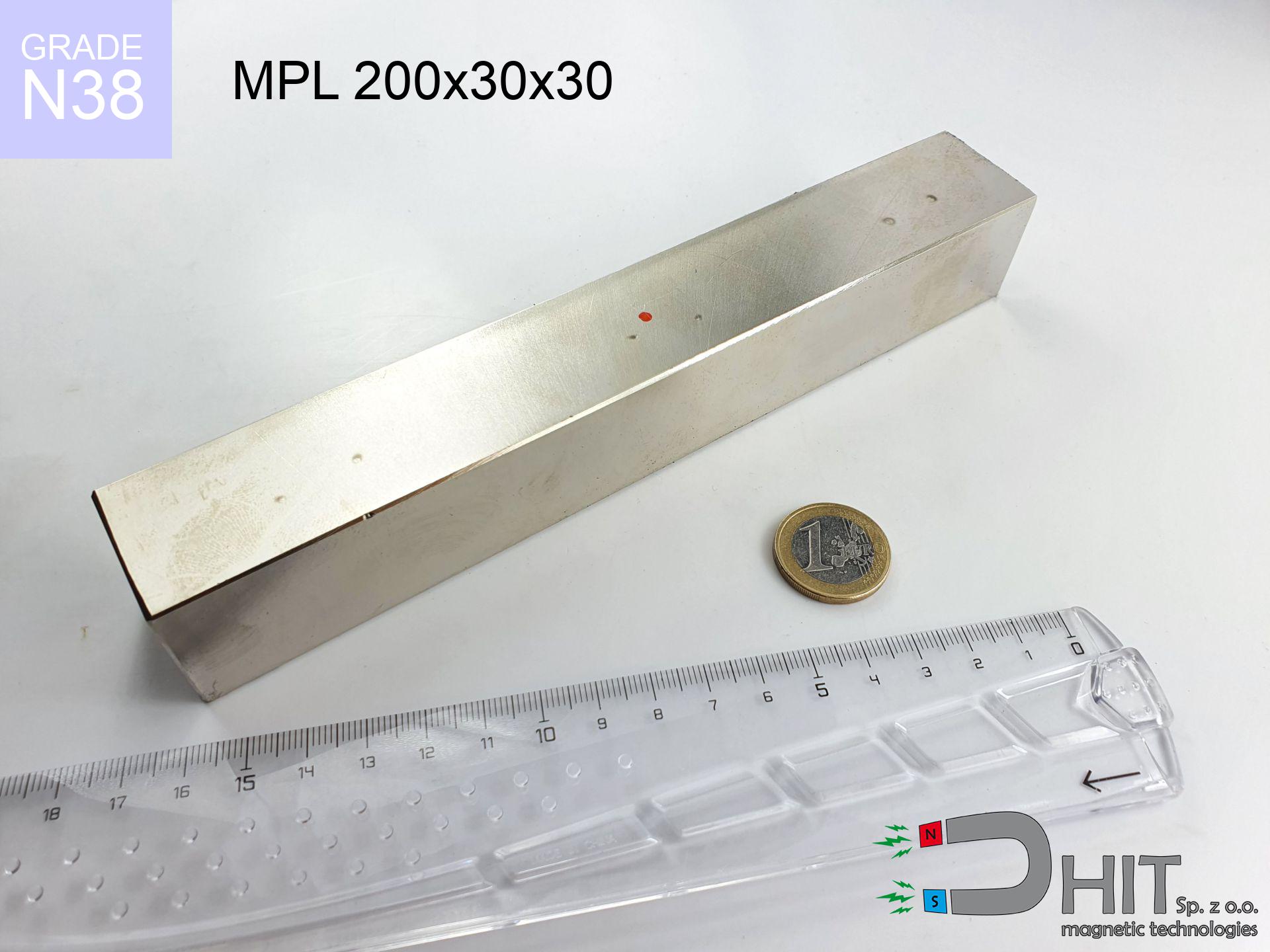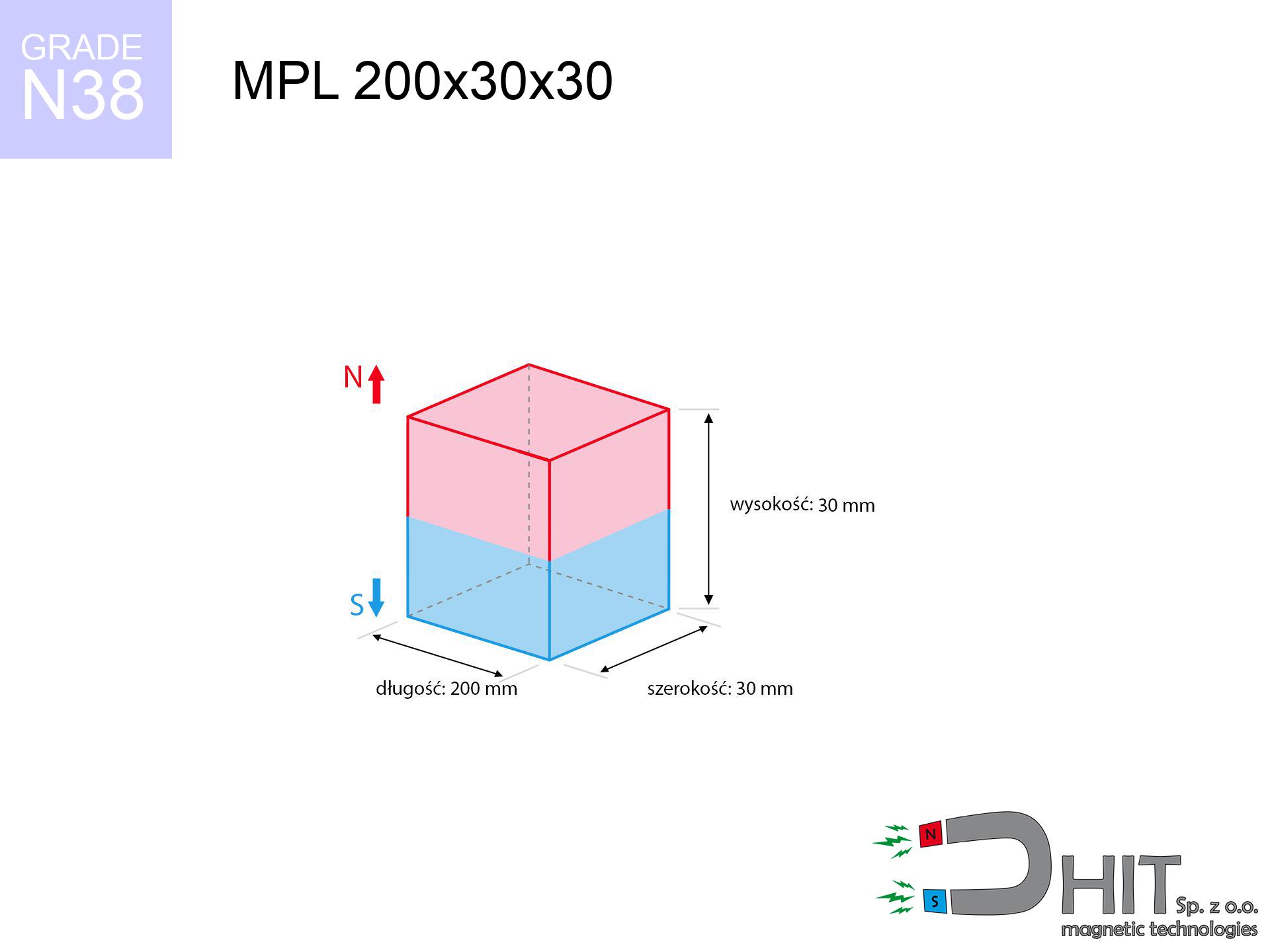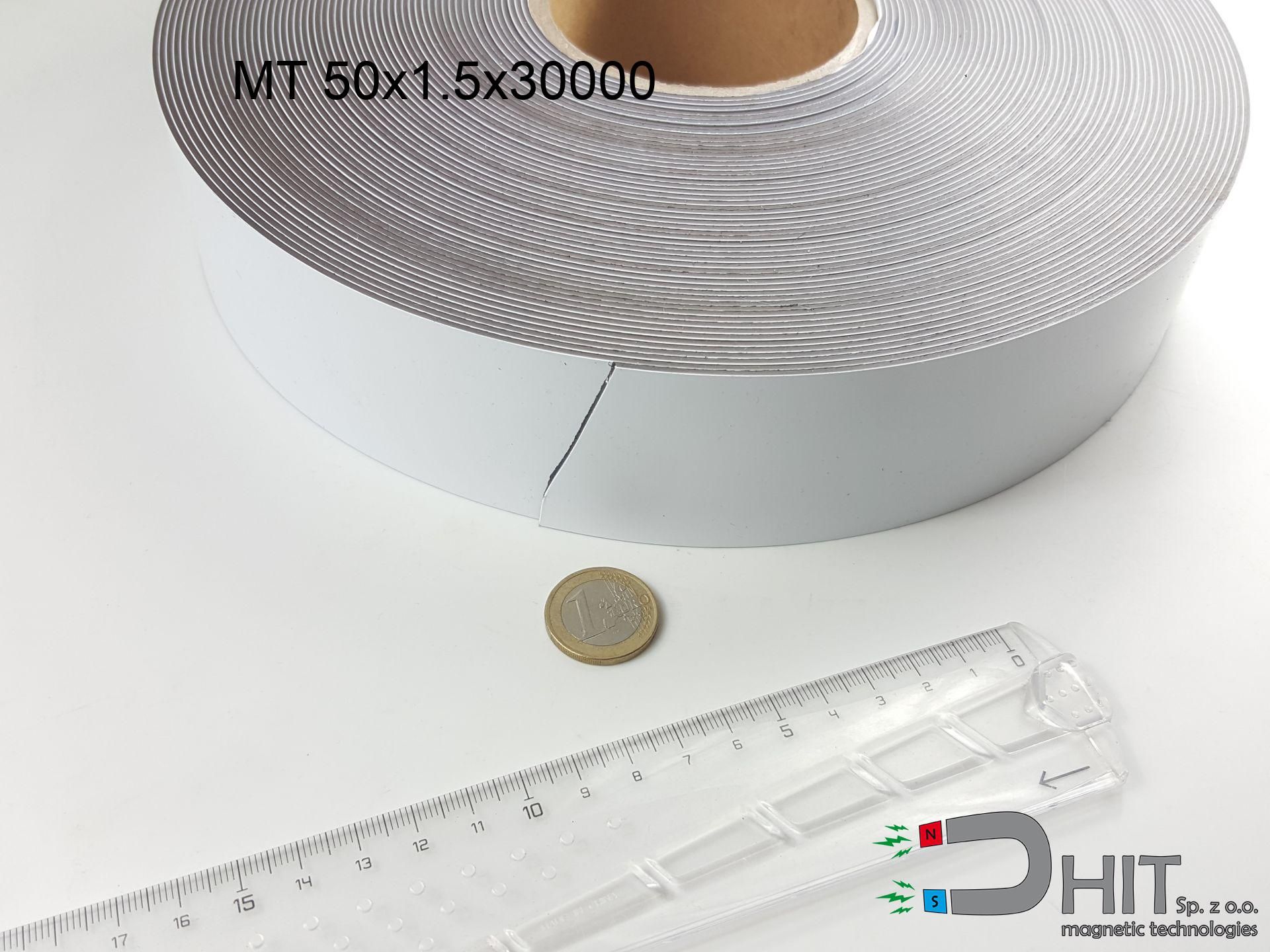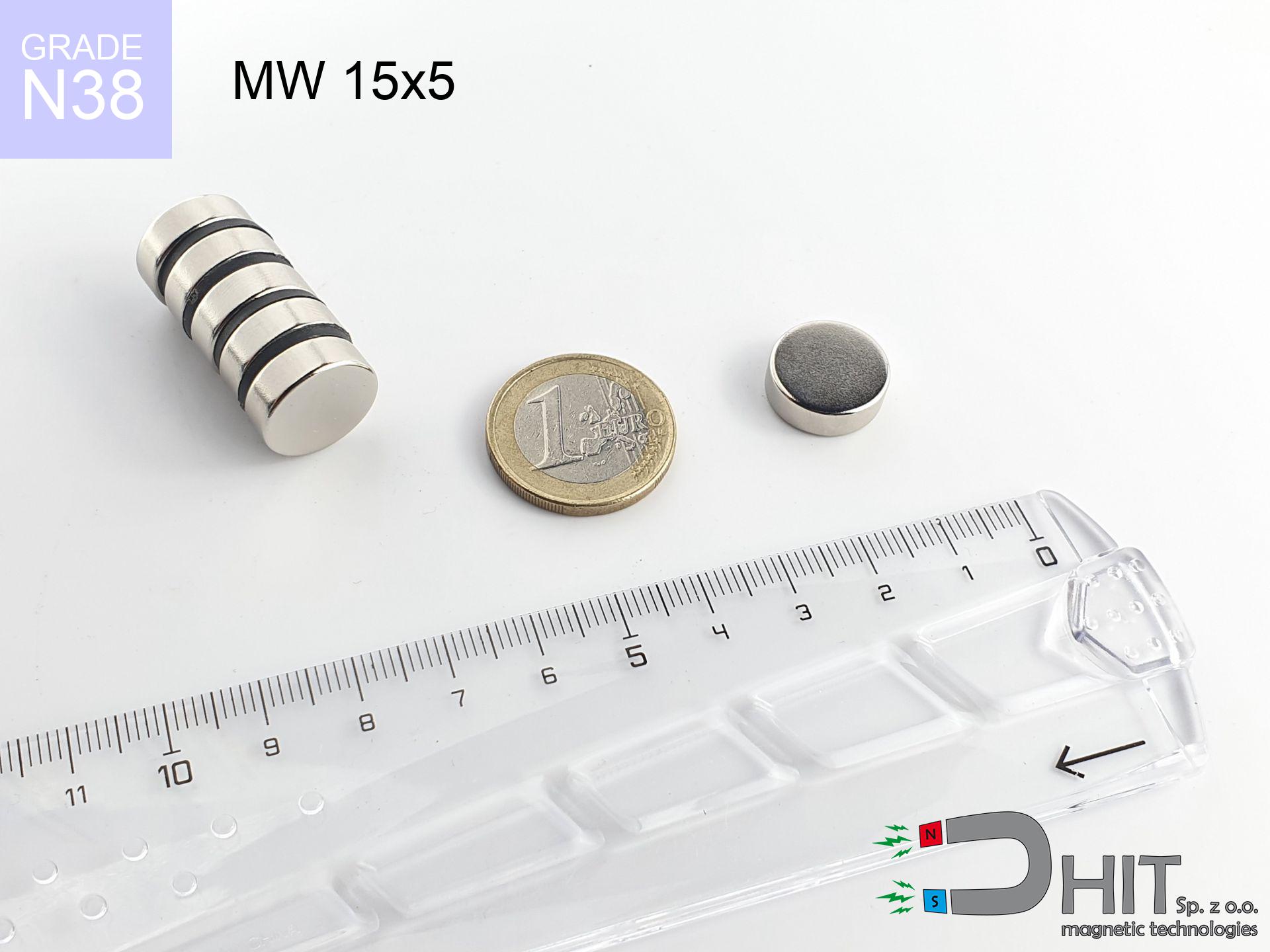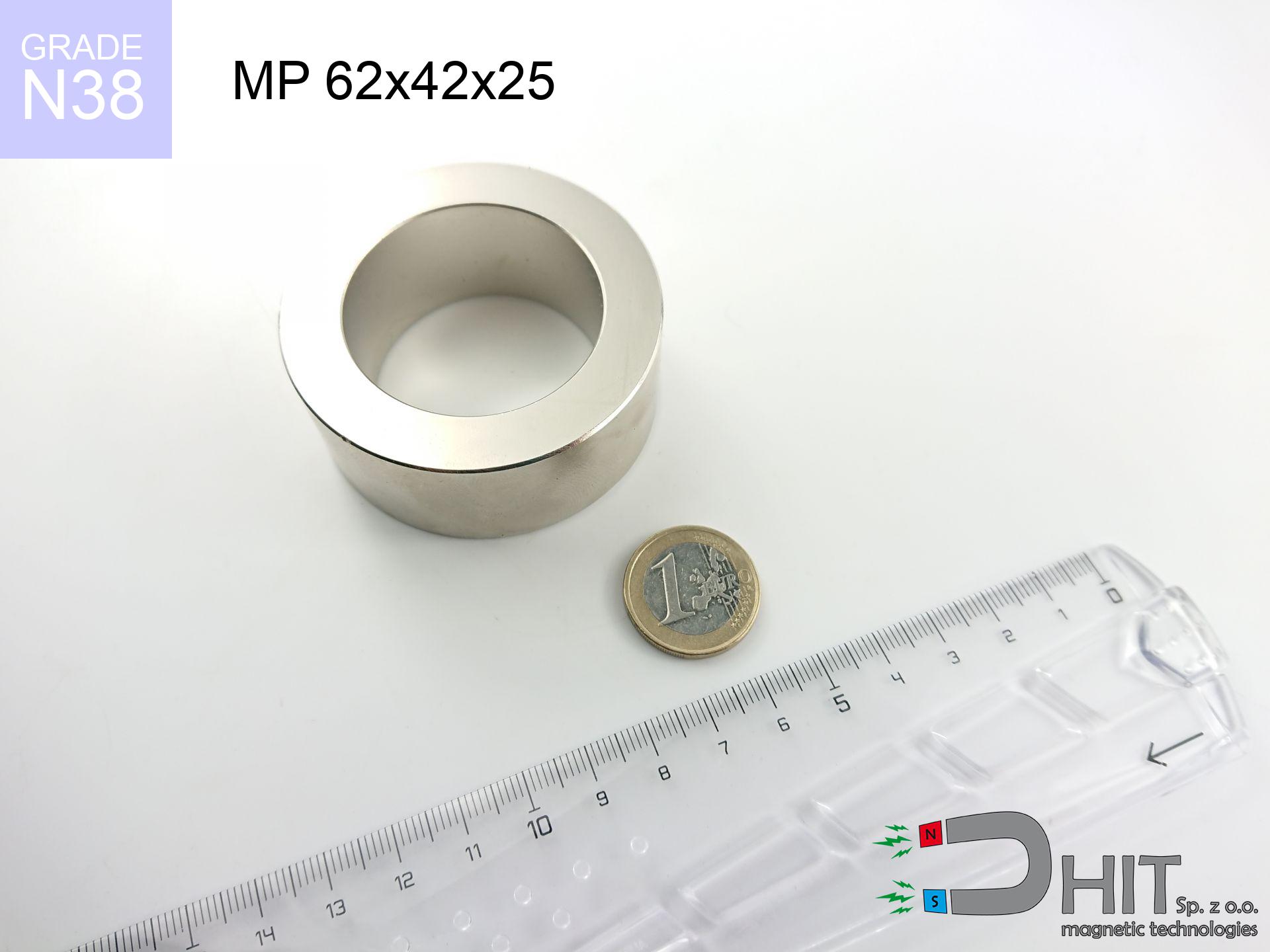MPL 200x30x30 / N38 - lamellar magnet
lamellar magnet
Catalog no 020125
GTIN: 5906301811312
length [±0,1 mm]
200 mm
Width [±0,1 mm]
30 mm
Height [±0,1 mm]
30 mm
Weight
1350 g
Magnetization Direction
↑ axial
Load capacity
183.51 kg / 1799.62 N
Magnetic Induction
445.15 mT
Coating
[NiCuNi] nickel
563.28 ZŁ with VAT / pcs + price for transport
457.95 ZŁ net + 23% VAT / pcs
bulk discounts:
Need more?Hunting for a discount?
Contact us by phone
+48 888 99 98 98
otherwise send us a note using
request form
the contact section.
Specifications and structure of neodymium magnets can be verified using our
power calculator.
Orders placed before 14:00 will be shipped the same business day.
Magnetic properties of material N38
Physical properties of sintered neodymium magnets Nd2Fe14B at 20°C
Shopping tips
Advantages and disadvantages of neodymium magnets.
In addition to their magnetic efficiency, neodymium magnets provide the following advantages:
- They retain full power for nearly 10 years – the loss is just ~1% (according to analyses),
- They maintain their magnetic properties even under external field action,
- In other words, due to the aesthetic surface of nickel, the element gains a professional look,
- The surface of neodymium magnets generates a powerful magnetic field – this is a distinguishing feature,
- Thanks to resistance to high temperature, they are capable of working (depending on the form) even at temperatures up to 230°C and higher...
- Possibility of custom forming as well as adjusting to specific applications,
- Versatile presence in future technologies – they are utilized in mass storage devices, brushless drives, medical devices, and modern systems.
- Relatively small size with high pulling force – neodymium magnets offer strong magnetic field in tiny dimensions, which allows their use in miniature devices
Disadvantages of neodymium magnets:
- They are fragile upon too strong impacts. To avoid cracks, it is worth protecting magnets using a steel holder. Such protection not only protects the magnet but also increases its resistance to damage
- Neodymium magnets lose strength when exposed to high temperatures. After reaching 80°C, many of them experience permanent weakening of power (a factor is the shape as well as dimensions of the magnet). We offer magnets specially adapted to work at temperatures up to 230°C marked [AH], which are very resistant to heat
- Magnets exposed to a humid environment can corrode. Therefore while using outdoors, we recommend using water-impermeable magnets made of rubber, plastic or other material protecting against moisture
- Due to limitations in realizing threads and complex forms in magnets, we recommend using casing - magnetic mechanism.
- Potential hazard resulting from small fragments of magnets pose a threat, if swallowed, which is particularly important in the aspect of protecting the youngest. Furthermore, tiny parts of these products are able to complicate diagnosis medical after entering the body.
- With budget limitations the cost of neodymium magnets is a challenge,
Maximum magnetic pulling force – what contributes to it?
The specified lifting capacity concerns the limit force, recorded under optimal environment, specifically:
- on a plate made of mild steel, effectively closing the magnetic flux
- possessing a thickness of at least 10 mm to avoid saturation
- characterized by smoothness
- under conditions of gap-free contact (surface-to-surface)
- under axial force vector (90-degree angle)
- at standard ambient temperature
Determinants of practical lifting force of a magnet
Holding efficiency is affected by working environment parameters, such as (from most important):
- Space between surfaces – every millimeter of separation (caused e.g. by varnish or dirt) diminishes the magnet efficiency, often by half at just 0.5 mm.
- Direction of force – highest force is reached only during pulling at a 90° angle. The force required to slide of the magnet along the surface is standardly several times lower (approx. 1/5 of the lifting capacity).
- Element thickness – to utilize 100% power, the steel must be sufficiently thick. Thin sheet limits the lifting capacity (the magnet "punches through" it).
- Material composition – different alloys attracts identically. High carbon content weaken the attraction effect.
- Surface finish – ideal contact is possible only on smooth steel. Rough texture reduce the real contact area, reducing force.
- Operating temperature – neodymium magnets have a negative temperature coefficient. At higher temperatures they lose power, and in frost they can be stronger (up to a certain limit).
* Holding force was checked on a smooth steel plate of 20 mm thickness, when the force acted perpendicularly, however under shearing force the lifting capacity is smaller. Moreover, even a minimal clearance {between} the magnet and the plate reduces the holding force.
Safety rules for work with NdFeB magnets
Phone sensors
GPS units and mobile phones are highly sensitive to magnetic fields. Direct contact with a powerful NdFeB magnet can ruin the internal compass in your phone.
Demagnetization risk
Do not overheat. Neodymium magnets are susceptible to temperature. If you require resistance above 80°C, inquire about special high-temperature series (H, SH, UH).
Danger to the youngest
Neodymium magnets are not suitable for play. Swallowing several magnets may result in them pinching intestinal walls, which constitutes a critical condition and necessitates urgent medical intervention.
Threat to electronics
Do not bring magnets near a purse, laptop, or screen. The magnetic field can destroy these devices and erase data from cards.
Serious injuries
Large magnets can smash fingers in a fraction of a second. Under no circumstances put your hand betwixt two attracting surfaces.
Magnet fragility
Protect your eyes. Magnets can fracture upon violent connection, launching sharp fragments into the air. Wear goggles.
Implant safety
Life threat: Strong magnets can turn off pacemakers and defibrillators. Do not approach if you have medical devices.
Nickel allergy
Allergy Notice: The Ni-Cu-Ni coating contains nickel. If redness occurs, cease handling magnets and wear gloves.
Immense force
Handle magnets with awareness. Their immense force can shock even experienced users. Be vigilant and do not underestimate their power.
Fire risk
Dust created during machining of magnets is self-igniting. Do not drill into magnets unless you are an expert.
Important!
More info about hazards in the article: Safety of working with magnets.


